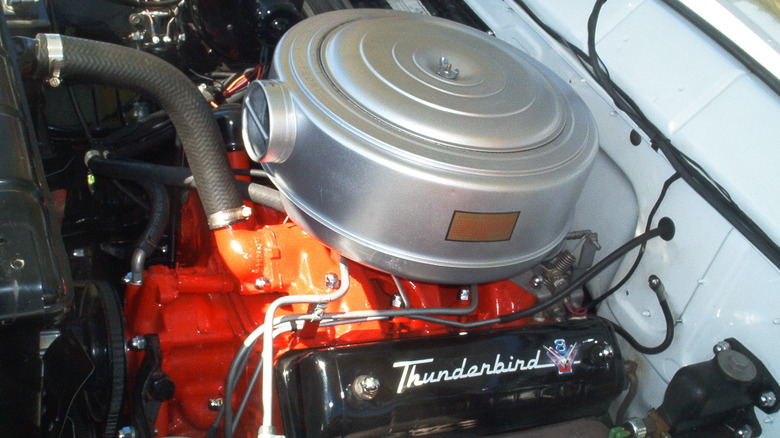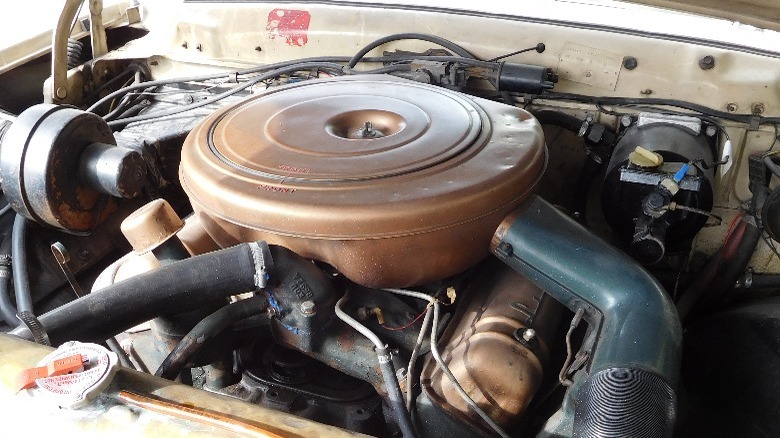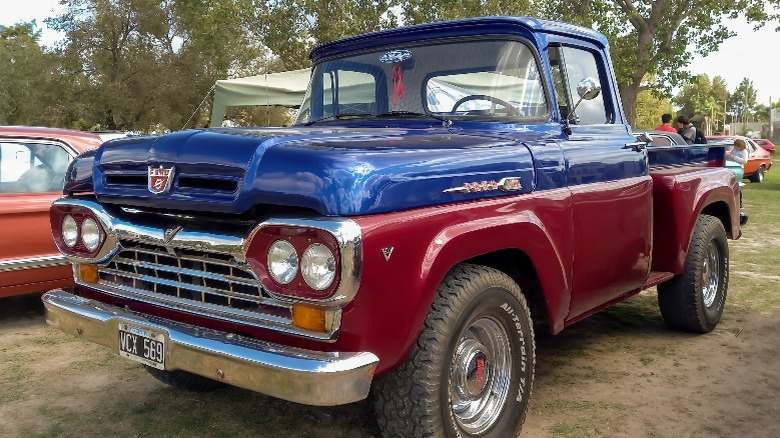The Ford V8 Engine That Was A Little Outside Of The Box
In the 1950s, Ford's original V8 engine was long overdue for a redesign. Although the iconic Flathead V8 design boomed in popularity upon debuting in the '30s and became a Hot Rod staple, rivals offered innovative alternatives that overshadowed Ford's conservatism.
Introduced to the market in 1954, the Y-block engine got its name from its distinctive deep skirting, which made the powertrain block resemble the letter "Y" when looking from the front. As Ford's first-ever overhead valve (OHV) engine, the Y-block attracted a lot of attention through its relatively short lifespan, both for good and bad reasons.
The Flathead V8 was known for its stability and smoothness, but its stock form lacked power. The Y-block was here to address the shortcomings of its predecessor while emphasizing its perks.
The first iterations of the Y-block V8 engines showed a considerable increase in brake horsepower. With 130 bhp, the 239 cu-in Y-block V8 delivered 18% more power to the wheels than the Flathead V8 with the same displacement volume. Those numbers increased to almost 30% for the bigger 256 cu-in Mercury engine with 161 bhp.
The deep skirting added more strength to the engine's bottom end, which contributed to the Y-block's rigidness. On the other hand, the same design feature was the reason for a considerably heavier cylinder block, but excessive weight was the less important drawback Y-block owners had to worry about.
Oil passages clogging up in the cylinder heads was a recurring problem for Y-block engines
The Y-block was designed with high-detergent oils in mind to lubricate the engine compartments. Because of this, non-detergent oils ended up clogging some of the oil passages that fed the upper end of the engine. Worse than that, sometimes misaligned camshafts and cylinder heads resulted in a lack of lubrication to the engine's top end, even after using proper oil.
Such common problems gave the Y-block a bad reputation. Eventually, Ford addressed this issue and used an external tube to send oil directly to the rocker shafts from the main oil gallery. But that was not the end of the headaches that came with Y-block engines.
Instead of installing cylinder head intake ports horizontally side by side, Ford had installed them vertically. The reason for this was to optimize fuel distribution and make smoother idles, but this came with a cost. The unusual arrangement of ports being on top of each other compromised the engine's air intake flow. Although Y-block engines could technically rev up to 7,000+ RPM, their airflow was inferior to the rivals, hence gaining a reputation for being "bad breathers."
[Featured image by Cjp24 via Wikimedia Commons | Cropped and scaled | CC BY-SA 4.0]
Despite its quirks, the Y-block engine has a special place in Ford's engineering history
Although not perfect, it's hard to overestimate the Y-block's impact on the automotive industry. Ford introduced this engine with five displacements throughout the years. Third-gen Ford F-series trucks with 292 cu-in Y-block engines were famous for their distinctive exhaust note and decent low-end torque. The later versions of the Y-block came as 312 cu-in V8s, capable of putting out over 240 horsepower.
Ford Y-blocks are identifiable rather easily. In almost all other Ford engines, you'll find the distributor at the front of the engine. However, the distributor is mounted at the back of the engine and off to the passenger side for the Ford and Lincoln Y-block. Another distinctive feature that makes these engines easily identifiable is the lack of bolts holding the valve covers through the top.
Compared to Chevy's 350 small-block V8 that entered the market in 1955, Ford's Y-block engine was considerably limited. While Chevrolet's small-block powertrain could offer as large as 400 cubic inches in displacement, the Y-block could only go up to 348 cubic inches. Finally, inherent limitations in terms of performance modifications made Ford cease domestic production of the Y-block engine in 1964.
Although short-lived, the legacy of the Y-block engine endures. The Y-block paved the way for Ford's legendary FE series of engines, which broke many records in the racing scene. To this day, car enthusiasts appreciate the Y-block's contribution to the golden era of American muscle cars.


